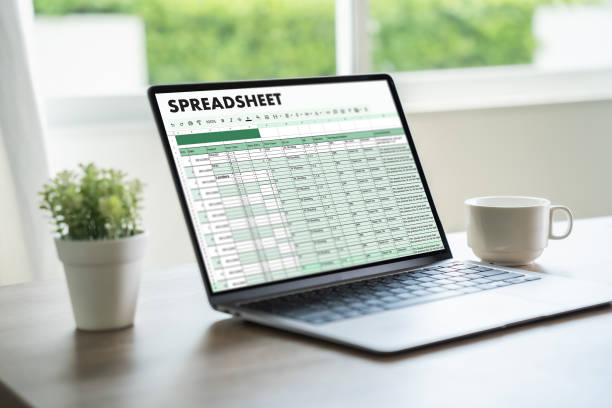https://docs.google.com/spreadsheets/__pii_deleted__: Google Sheets as a Free Project Management Tool: A Step-by-Step Guide
Project management tools are essential for teams, freelancers, and businesses to keep track of goals, deadlines, and tasks. While many popular tools come with a monthly fee, https://docs.google.com/spreadsheets/__pii_deleted__ Google Sheets stands out as a free project management tool that’s powerful, flexible, and easy to use. This guide walks through how anyone can turn a simple spreadsheet into a fully functional project tracker—without spending a dime.
Why Choose Google Sheets for Project Management?
When budgets are tight or teams need flexibility, Google Sheets project management becomes an obvious choice. It offers the core functionalities required to manage tasks, assign responsibilities, and track progress—all within the familiar spreadsheet interface.
Here are some reasons why it’s a preferred free project tracking software:
- 100% free with a Google account
- Accessible across all devices
- Google Sheets collaboration allows real-time editing and comments
- Easy integration with Google Drive, Docs, Calendar, and more
Setting Up Your Project Management Sheet
Setting up a project tracker in Google Sheets requires just a few thoughtful columns. Here’s how to begin:
- Open Google Sheets and create a blank sheet.
- Create headers like:
- Task Name
- Owner
- Status
- Priority
- Start Date
- Due Date
- Notes
This setup forms the foundation of your Google Sheets project template. For a cleaner layout, consider using drop-down lists for “Status” and “Priority” to avoid manual entry errors.
Proper formatting also goes a long way. Use bold headers, freeze the top row, and color-code columns for a quick visual scan. This setup helps streamline your project tracker setup process.
Automating Your Workflow with Formulas & Conditional Formatting
One of the best ways to boost productivity in https://docs.google.com/spreadsheets/__pii_deleted__ is automation. Google Sheets makes this simple with built-in formulas.
Some helpful options include:
- =TODAY() to display the current date
- =IF(DueDate<TODAY(),”Overdue”,”On Track”) for deadline tracking
- =COUNTIF(StatusRange,”Completed”) to count finished tasks
Using Google Sheets project automation, you can apply conditional formatting to change the cell color when tasks are overdue or marked as high priority. These visual cues ensure important items stand out.
Conditional formatting in spreadsheets not only adds a layer of visual structure but also keeps users alert to deadlines and shifting priorities.
Sharing, Permissions, and Team Collaboration
Effective teamwork requires easy communication and secure file sharing. With Google Sheets https://docs.google.com/spreadsheets/__pii_deleted__, this process is smooth and intuitive.
Use the Share button in the top-right corner to invite team members. Depending on their role, assign them edit, view, or comment access. For transparency and accountability, use the comment feature to tag team members directly and follow up on progress.
Google Sheets team collaboration eliminates the need for email chains or third-party tools, keeping everything in one centralized location. By managing spreadsheet sharing permissions carefully, project leads can ensure sensitive information stays protected while still promoting transparency.
Also Read: https:// docs.google.com/spreadsheets/__pii_deleted__
Using Add-ons and Templates to Enhance Functionality
While Google Sheets is powerful on its own, it becomes even better with add-ons. These tools extend functionality and save time.
Popular choices for https://docs.google.com/spreadsheets/__pii_deleted__ Google Sheets add-ons for productivity include:
- ProjectSheet – turns sheets into a Gantt-style planner
- Yet Another Mail Merge – send status emails from your sheet
- Power Tools – bulk editing and data cleaning
If you’re starting fresh, downloading a free project planner template from the Google Sheets template gallery is a great jumpstart. These templates often include status dashboards, charts, and progress bars.
Real-Life Use Cases and Benefits
Whether you’re a freelancer managing clients, a teacher organizing assignments, or an event planner juggling logistics, Google Sheets can scale to your needs.
As a simple project management tool, it provides:
- Transparency across teams
- Better communication with stakeholders
- No software learning curve
A mini Google Sheets case study can be seen in small startups that use it to track bug fixes, marketing campaigns, and team sprints—all with zero software costs.
Tips for Staying Organized Long-Term
Maintaining a project tracker requires discipline. These best practices ensure your sheet remains useful over time:
- Set a schedule for weekly updates
- Use tabs to archive completed tasks
- Leverage version history to review past edits
Following these project tracking best practices ensures your spreadsheet remains effective throughout the project lifecycle.
Keeping your spreadsheet project organization clean reduces confusion and makes it easier for new team members to get up to speed.
Conclusion
https://docs.google.com/spreadsheets/__pii_deleted__ is more than just a spreadsheet—it’s a robust, free project management tool when used strategically. With the right setup, some automation, and clear communication, any team can take control of their projects without needing premium software.
Whether you’re just getting started or looking to simplify your current process, try using a Google Sheets project template today. You’ll discover that sometimes, the best tools are the ones you already have—free, flexible, and just a click away.














Post Comment